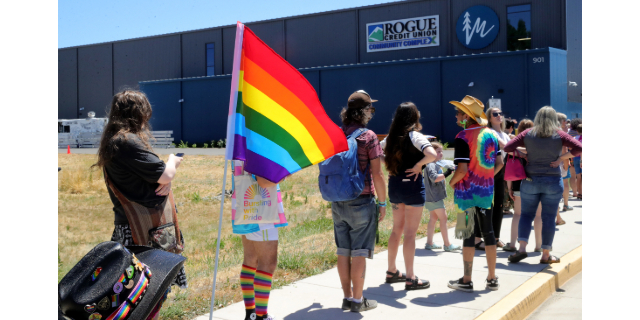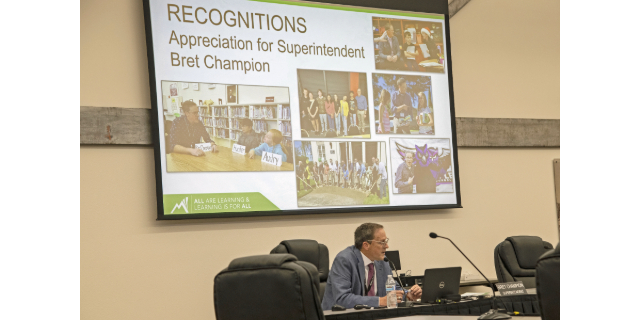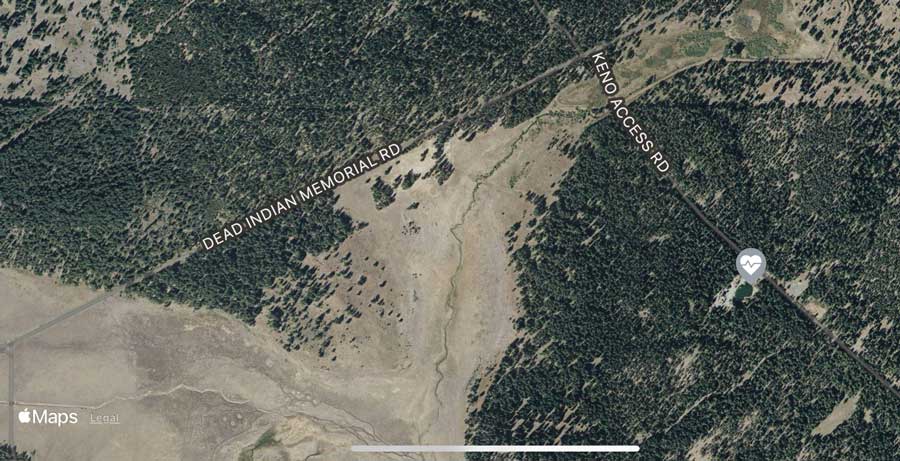Speaking up for the trees on the picket line and in the courtroom
Published 5:00 pm Wednesday, April 3, 2024

- Michael Dotson, of Ashland, attends a protest concerning U.S. Bureau of Land Management logging plans at the federal courthouse in Medford on Tuesday.
A U.S. Bureau of Land Management plan to speed up logging while reducing wildfire risk was challenged in U.S. District Court in Medford on Tuesday. But first, about 35 logging opponents demonstrated with signs outside the courthouse.
Among the forest of signs out on the picket line was one held by Michael Dotson, executive director of the Klamath-Siskiyou Wildlands Center in Ashland.
“We speak for the trees,” the sign read.
Big, old trees in particular.
“There’s a lot of talk about the wildfire issue,” Dotson said. “We actually need to not buy the BLM line that everything’s about wildfire.”
Leave the big, old fire-resistant trees alone, he said.
Behind Dotson and the other demonstrators was the three-story brick courthouse, officially the James A. Redden Courthouse, at Sixth and Holly streets, downtown. The sun beat down on an unusually warm early spring afternoon.
As Dotson spoke around 1:30 p.m., attorneys for KS Wild and other conservation groups prepared for a 2 p.m. hearing inside over BLM logging plans near Williams. Also preparing were attorneys for the U.S. government and timber industry trade groups.
Both sides are asking U.S. Magistrate Judge Mark D. Clarke to rule in their favor. After more than two hours of complicated legal wrangling that afternoon, Clarke took matters into consideration.
“The whole idea is to protect old growth,” BLM attorney Alexis Romero told Clarke, a 16-year veteran of the bench.
“The court understands the need for prompt forest management,” Clarke said during his opening remarks. “I’m certainly not an expert in environmental cases, but I’ve been around a while.”
Clarke pointedly asked why the government wanted to log old-growth trees.
“Where is that authorized?” he asked.
The reply was buried in an avalanche of legal arguments from both sides. Multiple attorneys spoke for each side.
The arguments were pro and con regarding a BLM forest fuels-treatment program known as Integrated Vegetation Management that calls for logging, thinning and road building across the agency’s Medford district, which takes in Jackson and Josephine counties.
The program “creates a toolbox for the BLM to increase the scope, scale and pace of fuels treatments and vegetation management projects,” according to the agency. “This will allow the BLM to improve the health of forests, create safe and effective places for firefighters to engage and address climate change.”
According to the agency, the program calls for commercial logging of up to 4,000 acres a year, small-diameter thinning of up to 6,500 acres a year, prescribed fire on up to 7,500 acres a year and temporary road construction of up to 10 miles a year over 10 years across the district.
The conservation groups especially object to planned logging of older trees associated with two proposed federal timber sales known as Penn Butte and Late Mungers. These would be the first commercial sales to take place under the agency’s IVM program. The groups don’t object to related BLM plans for thinning and prescribed burning of fuels along the forest floor.
The Mungers project takes in 830 acres of selective logging and 7,500 acres of fuels-reduction work on multiple tracts in areas off Powell Creek Road, Mungers Creek Road, Spencer Creek Road and others, in drainages that flow into the Applegate River.
“The forests targeted for removal in Late Mungers are resilient, healthy, and most important they are designated as reserves for conservation, not timber supply,” Doug Heiken, conservation and restoration coordinator for Oregon Wild, said in a news release from conservation groups.
According to the groups, the logging would remove more than 450 acres of old-growth habitat via “open seral” logging and “gap creation” clearcutting. Gap creation is a reference to creating open spaces in the forest in an effort to replicate historic forest conditions.
The BLM’s goal is to have larger trees more widely spaced, with relatively less undergrowth than there is at present. Gaps up to 4 acres are envisioned. Trees up to 36 inches in diameter would be logged.
The timber sales are due to take place during a May 15 auction, depending on how Clarke rules.
Cheryl Bruner, of the Williams Community Forest Project, sat in the front row of the gallery in the courtroom. During the earlier protest, she was out front with a sign.
“Water is life” was the message on her sign. “Trees have standing” was the message on her T-shirt.
“This is my backyard,” she said out front, referring to logging planned near her home. “Our hiking areas will be devastated.”
“The amount of trees they’re taking out is a lot.”
To learn more about the BLM’s plans, visit https://on.doi.gov/3W31c9J. To learn more about conservation group challenges, go to kswild.org.







